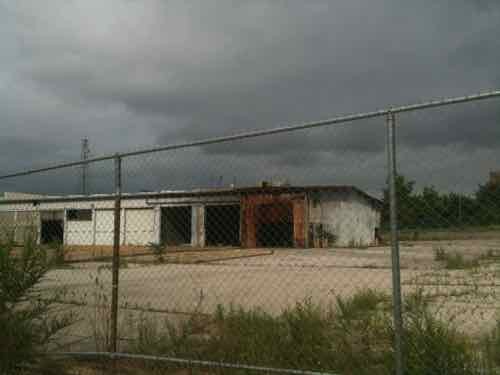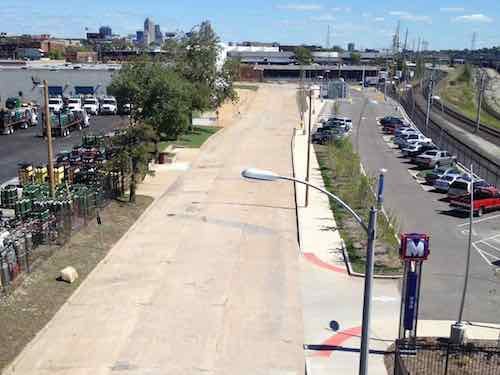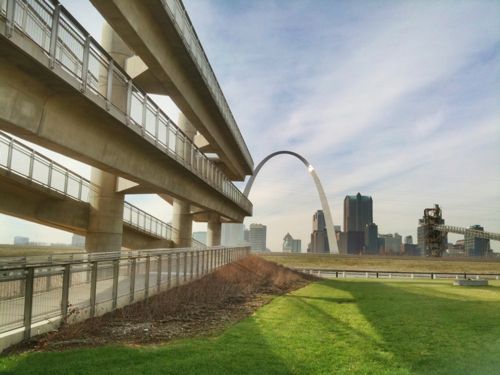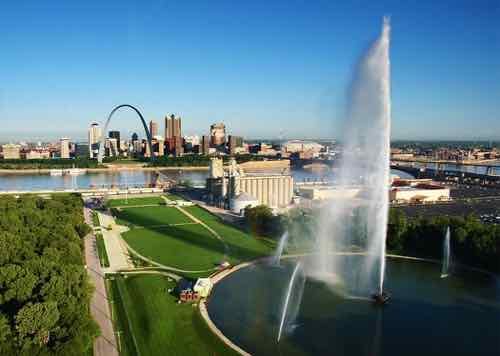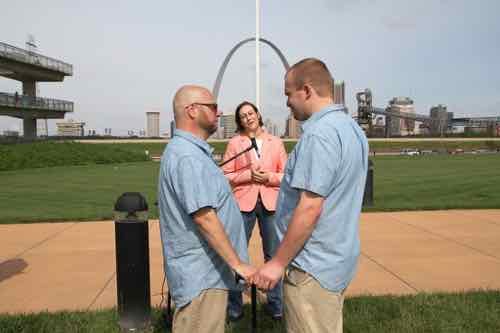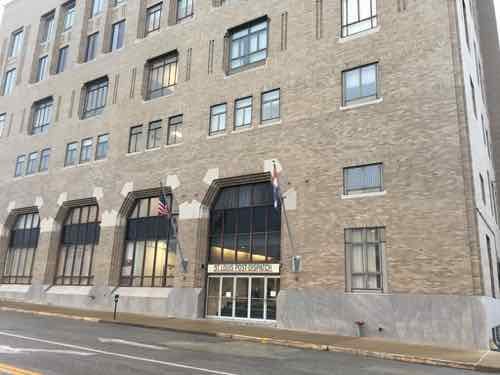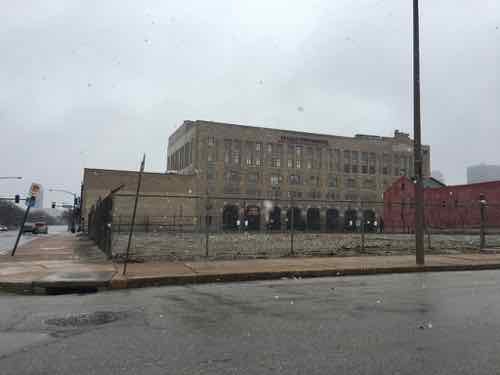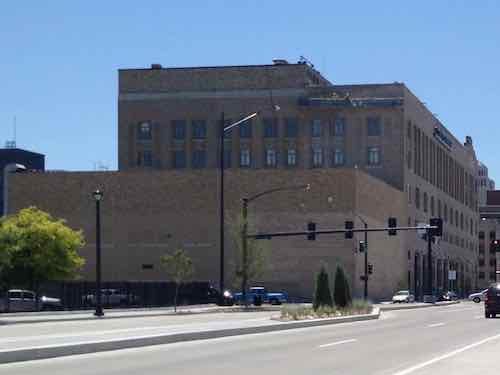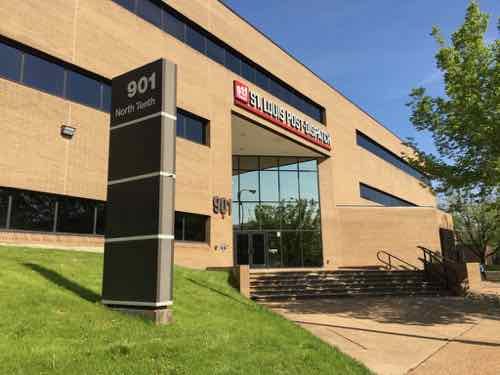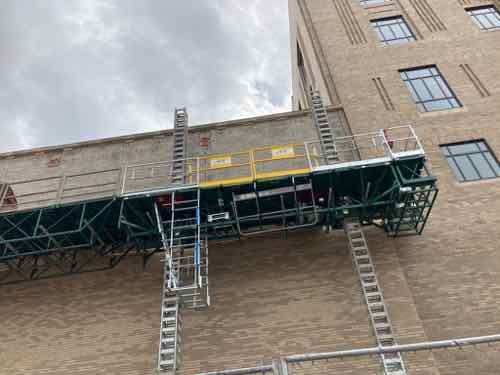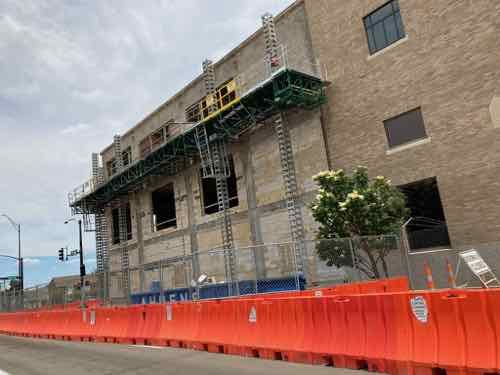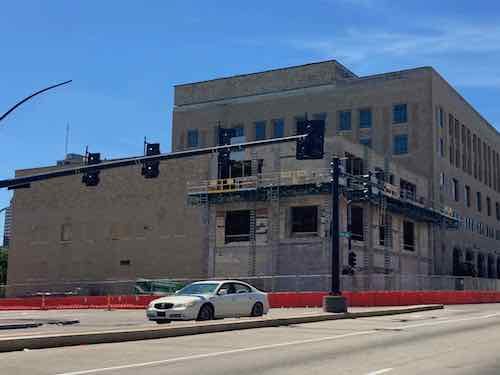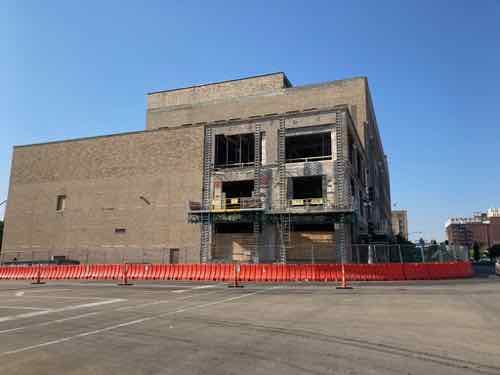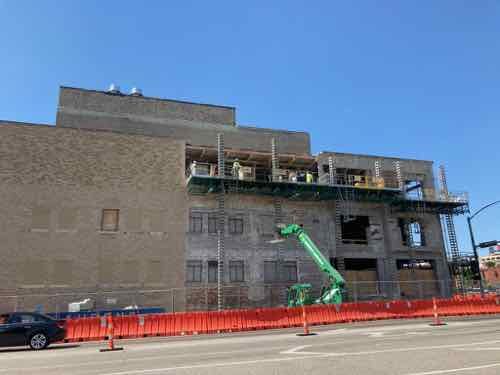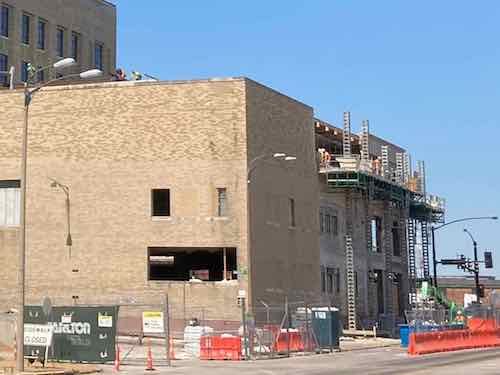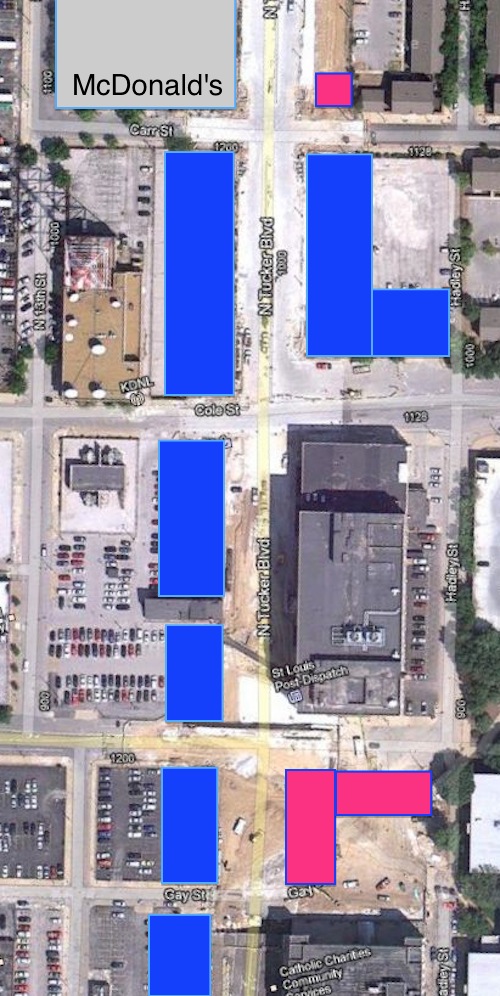East St. Louis & Tulsa’s Greenwood Neighborhood Rebuilt After White Mobs Rioted In 1917 & 1921, Respectively
|
|
There are many similarities between race riots in East St. Louis IL and four years later, Tulsa OK (1917 & 1921, respectively). Both involved angry white mobs killing blacks and destroying their homes & businesses.
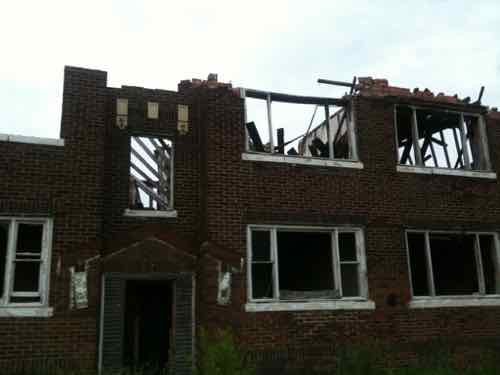
Both were also rebuilt.
In 1910, 90 percent of African Americans lived in the South, the vast majority were sharecropping in rural areas. But hostilities in Europe had almost stopped the flow of white workers to northern factories, while increasing the demand for product from munitions and weapons manufactures. This gave unions more negotiating power, and wages were inching up. So employers started recruiting black workers from the south as strike breakers and replacement workers. About a half-million black workers moved to Chicago, Detroit, Ohio, Philadelphia and St. Louis between 1910 and 1920.
The worst recorded incident of labor-related racial violence occurred in St. Louis in 1917. When the Aluminum Ore Company brought in African American workers to break a strike, 3,000 white union members marched in protest. The marchers morphed into a mob, attacking random black residents on the street. The following day, shots were exchanged between whites and black in the black part of town; two plainclothes police officers were killed. When the news got out, roving white mobs rampaged through black East St. Louis, burning homes and businesses, and assaulting men, women and children. Between 100 and 200 black working people died and 6,000 were left homeless. It foreshadowed things to come.
A year later, four million soldiers returned from World War I. With no plan for absorbing them into the economy, unemployment rose rapidly. Both white and black veterans felt betrayed. In the “Red Summer” of 1919, 38 separate race riots occurred, all of them white mobs attacking blacks. The worst riot occurred in Chicago. After a black youth was stoned for swimming into the “white” part of the lake, Irish and black gangs battled each other for 13 days. When it was over, 23 blacks and 15 whites were dead, 537 were injured and 1,000 black families were homeless. Across the country, more than 100 people died that summer, while scores of black homes and businesses were destroyed. (AFLCIO)
St. Louis meanwhile, in 1914, agreed to allow the Daughters of the Confederacy install a pro-confederacy monument in Forest Park (removed in 2017). Two years later, in 1916, St. Louis voters overwhelmingly approved a pro-segregation zoning ordinance. A riot across the river in 1917 unfortunately was another in a series of whites being…racists.
In the summer of 1916, 2,500 white employees of the meatpacking industry near East St. Louis went on strike for higher wages, and the companies imported black workers to replace them. Ultimately the workers won a wage increase but the companies retained nearly 800 blacks, firing as many whites after the strike, according to the former president of the Central Trades and Labor Union of East St. Louis. This result only exacerbated the growing racial tension.
In the spring of 1917, the mostly white workers of the Aluminum Ore Company in East St. Louis voted to strike. The company recruited hundreds of black workers to replace them. Tensions between the groups escalated. At a labor meeting held in City Hall on May 28 and made up mostly of white workers, rumors circulated of black men fraternizing with white women. (Wikipedia)
On July 1, 1917 the worst of the East St. Louis rioting of 1917 took place — 103 years ago today.
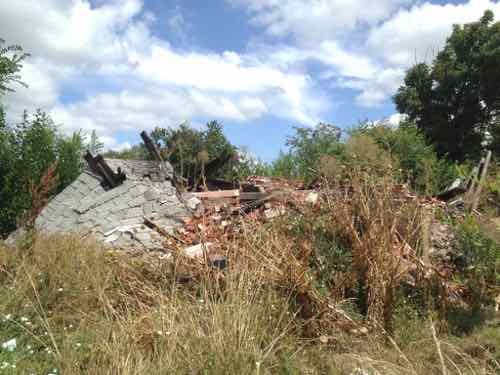
Today parts of East St. Louis are ruins.
Tulsa, like many cities and towns throughout the US, was hostilely segregated, with African Americans settling into the northern region of the city. As we often saw before integration, Blacks in the area created entrepreneurial opportunities for themselves, which housed an impressive business center that included banks, hotels, cafes, clothiers, movie theaters, and contemporary homes. Greenwood residents enjoyed many luxuries that their White neighbors did not, including indoor plumbing and a remarkable school system that superiorly educated Black children. (Ebony)
If there was a silver lining to segregation it was that it forced black money to be spent at black-owned businesses.
The massacre began over Memorial Day weekend after 19-year-old Dick Rowland, a black shoeshiner, was accused of assaulting Sarah Page, the 17-year-old white elevator operator of the nearby Drexel Building. He was taken into custody. After the arrest, rumors spread through the city that Dick Rowland was to be lynched. Upon hearing reports that a mob of hundreds of white men had gathered around the jail where Dick Rowland was being kept, a group of 75 black men, some of whom were armed, arrived at the jail with the intention of helping to ensure Dick Rowland would not be lynched. The sheriff persuaded the group of black men to leave the jail, assuring them that he had the situation under control. As the group of black men was leaving the premises, complying with the sheriff’s request, a member of the mob of white men attempted to disarm one of the black men. A shot was fired, and then according to the reports of the sheriff, “all hell broke loose”. At the end of the firefight, 12 people were killed: 10 white and 2 black. As news of these deaths spread throughout the city, mob violence exploded. White rioters rampaged through the black neighborhood that night and morning killing men and burning and looting stores and homes, and only around noon the next day did Oklahoma National Guard troops manage to get control of the situation by declaring martial law. About 10,000 black people were left homeless, and property damage amounted to more than $1.5 million in real estate and $750,000 in personal property (equivalent to $32.25 million in 2019). Their property was never recovered nor were they compensated for it. (Wikipedia)
Molotov cocktails were dropped from small planes onto roofs of buildings, a first on US soil.
Following the events known as the 1921 Tulsa Race Riot, the area was rebuilt and thrived (with more than 100 MORE African-American businesses in place than there were before the riot itself) until the 1960s when desegregation allowed blacks to shop in areas from which they were previously restricted. (Greenwood Cultural Center)
East St. Louis, like Tulsa, quickly rebuilt. Today we see ruins, disinvestment, etc and fail to discuss the fact these communities did rebuild. Both East St. Louis and the Greenwood area were negatively impacted by demolition for highways, bank redlining, etc.
Riots didn’t destroy these communities, but systematic racist planning did. Of course, we new freedom to live, shop outside previously segregated areas it’s very possible these areas would’ve declined anyway.
— Steve Patterson
